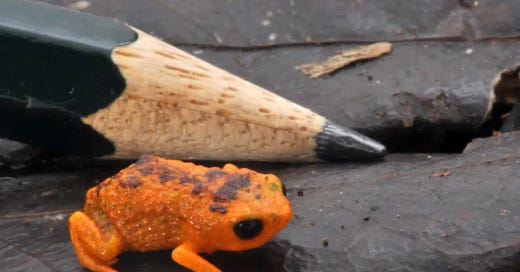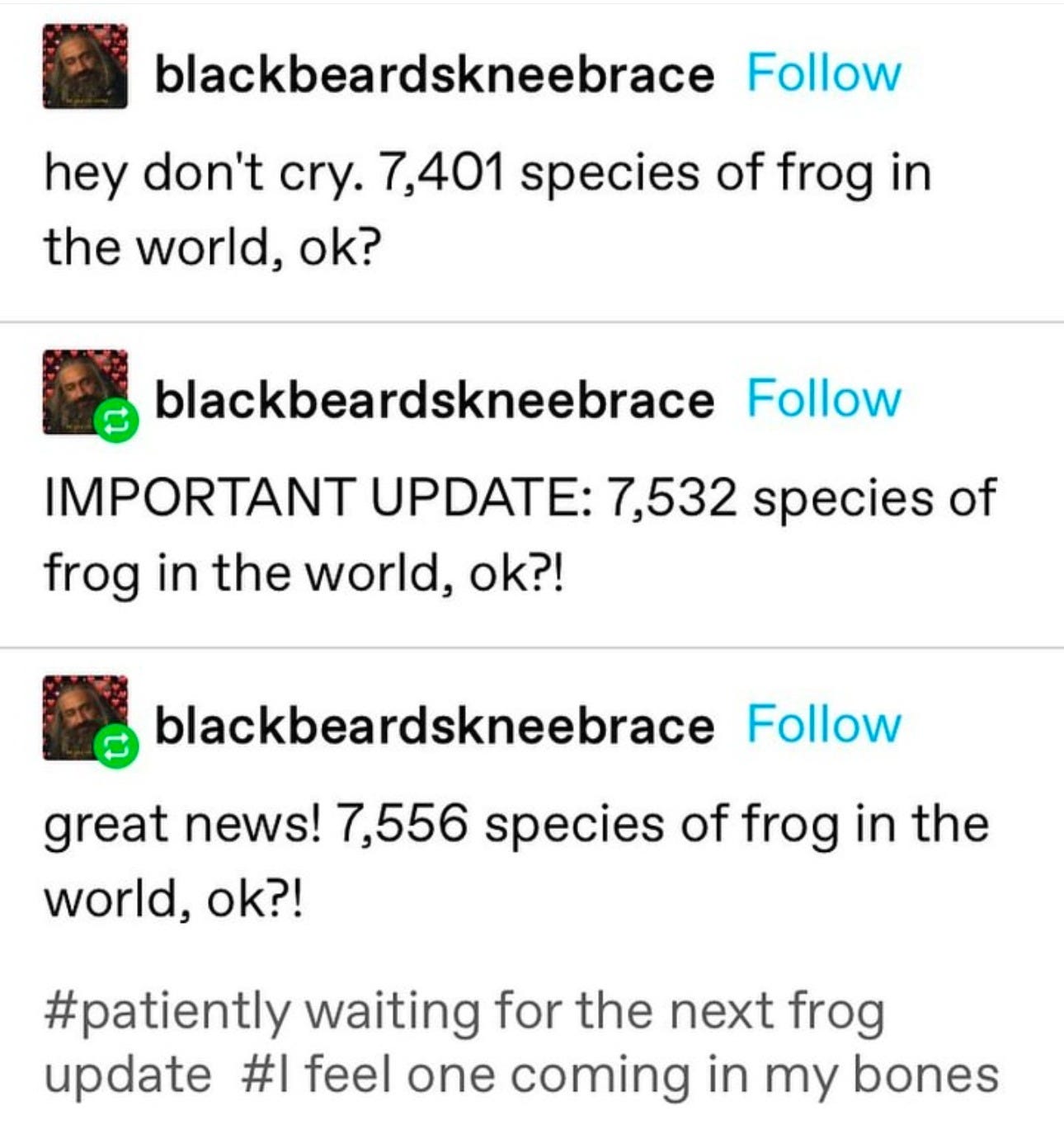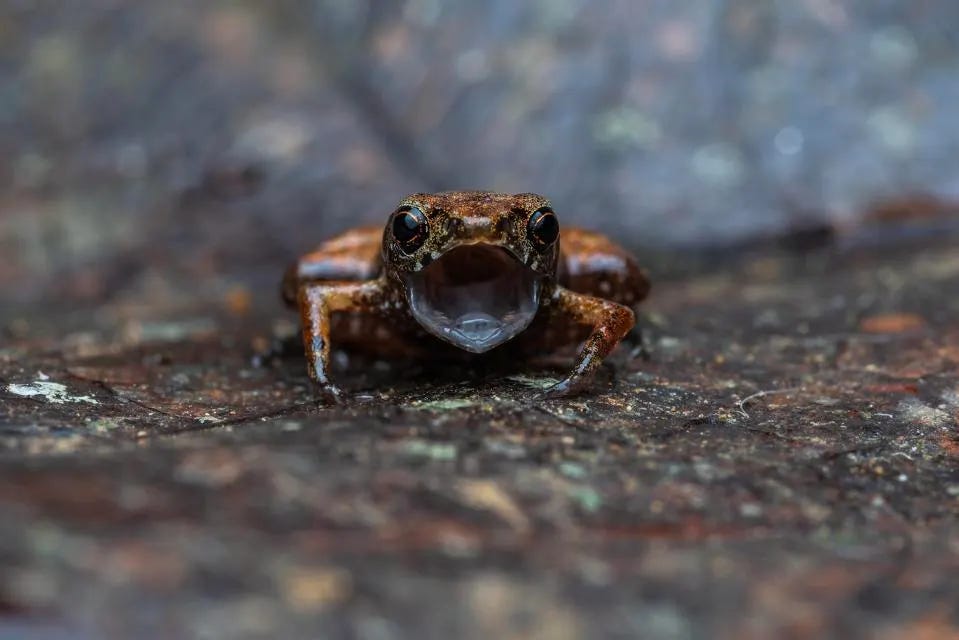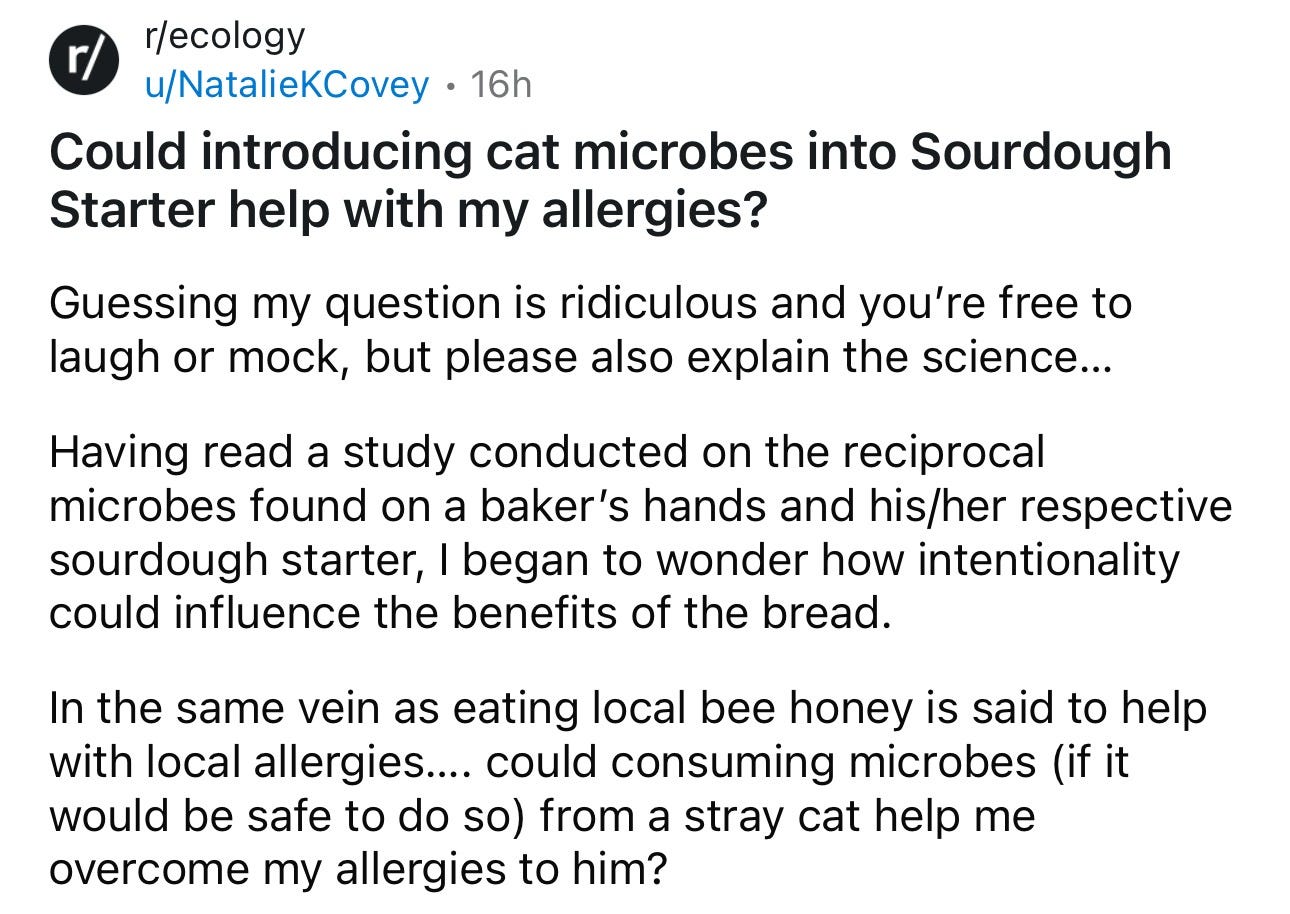hot new releases right off the shelves (frogs, we're mostly talking about frogs)
I just came across AmphibiaWeb’s new species list - seems there were 72 new amphibians described in 2024 so far! Or more accurately, amphibians newly described - surely they’re not really new here.
ah, there’s nothing as satisfying as a good list. That was my favorite thing about The Pillow Book of Sei Shonagon, too.
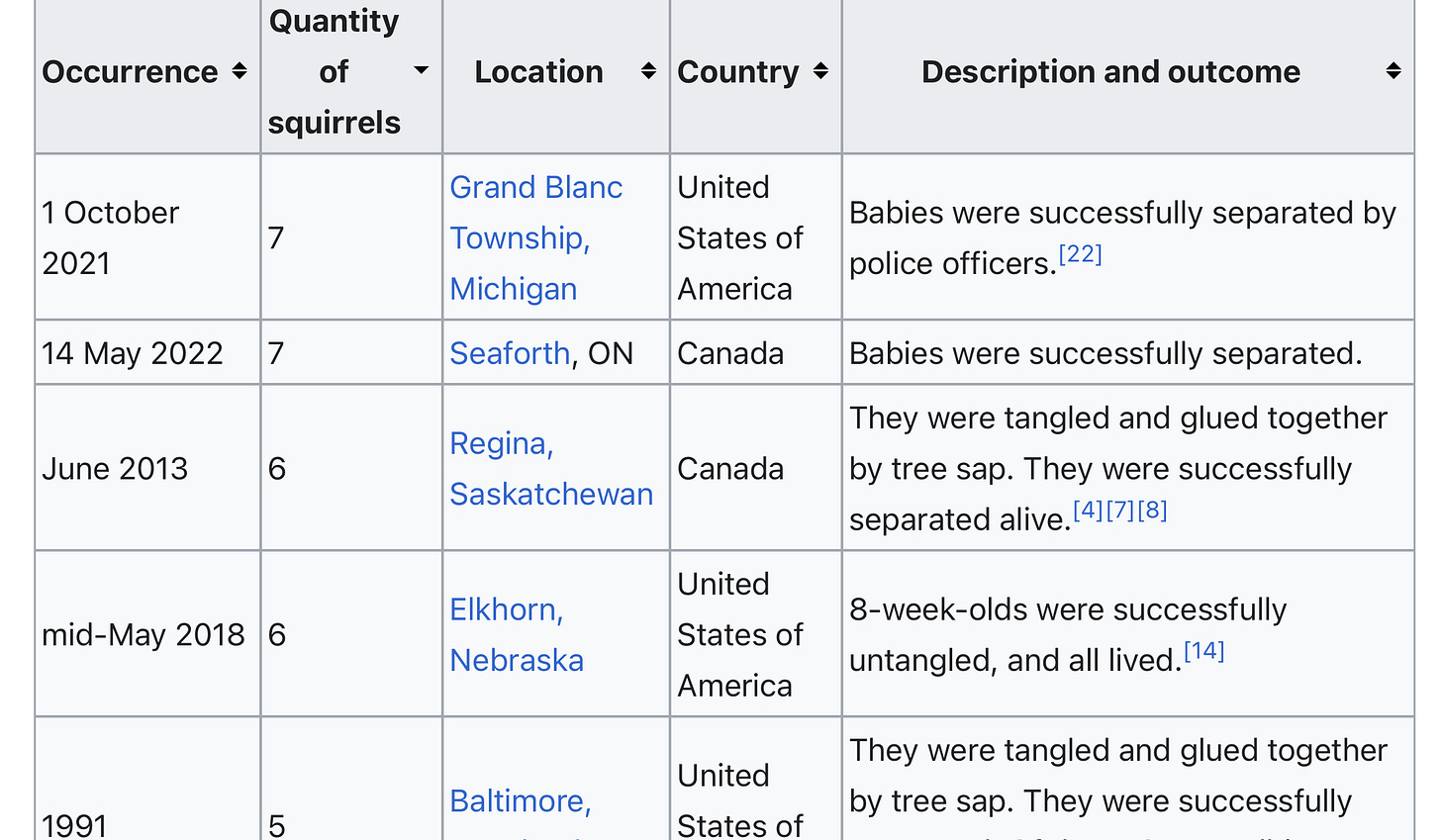
It just gives me life to encounter scads of new life like this. Like this delightful find, where a new clearwing moth species from Guyana was discovered in someone’s living room in Wales. Also charming, a new species of Dainty Frog was noted in September. A dainty frog! But is it demure?
And these! “Three new species of frogs found nestled in Madagascar’s pandan trees” New, you say? “They’ve been seen by Malagasy people for thousands of years, known as the secretive Sahona vakoa, or ‘frogs of the Pandanus'.”
They were given the official scientific names Guibemantis rianasoa, G. vakoa, and G. ambakoana.
“The frogs were all given names in Malagasy to enable their description to be more accessible by local guides and frog-enthusiasts,” Gabriel said. “Rianasoa is named for a beautiful waterfall in Mantadia National Park, where the frogs can also be found. The clear water of the waterfall’s pool, reflecting the blue and green shadows of the forest, reminded Evariste [Desire] and I of the coloration of the beautiful new frog. Vakoa is the Malagasy word for Pandanus, and ambakoana means ‘living within Pandanus.’” - Mongabay
Remember how I discovered the CONCH-L listserv? The Malagasy frog naming here reminded me of this CONCH-L thread on scientific vs vernacular names (focusing on the Florida Cone), especially this bit on Japanese common names for molluscs:
“Vernacular names are useful in bridging that liminal space between reproducible “science” and local knowledge; if you are working in the field with farmers and hobbyists looking at birds, plants or freshwater mussels, it really helps to know them. Where they fail is if you try to build science off them with no other evidence. I have a vast library of Japanese regional faunal lists for mollusks that use only vernacular names. Japanese common names are remarkably stable – it’s a very homogeneous society – but even so, you cannot know for sure what the person who compiled the list actually saw.” - Paul Callomon, who also linked to his thesis The Nature of Names: Japanese vernacular nomenclature in natural science
(I’m also reminded of the first time my partner was able to feel the fetus kick back when I was pregnant. Me: “You’ve made first contact!” Him: “That’s like saying Christopher Columbus discovered America”)
Then in October, we noted “a new miniaturized flea-toad” (Brachycephalidae dacnis). Even tinier than the thumbnail-sized baby frogs I used to catch in school lunch milk cartons at the pond in summer camp as a kid. “One of the individuals measured 6.95 mm, which is currently the second smallest adult vertebrate ever described”.
Apparently most miniature critters have correspondingly simplified anatomy, but B. dacnis not so much.
“The skeleton of B. dacnis is remarkable for not having the fusions and loss of elements typical of many miniaturized anurans... though extremely small, the skeleton of B. dacnis exhibits skeletal traits typical of larger frogs, such as the presence of cranial bones that are lost or fused in other miniature frogs”
Their similarly itty bitty cousins, the pumpkin toadlets, are kinda the opposite.
“Although pumpkin toadlets are larger than flea toads, they have fewer anatomical structures. Curiously, for example, they are unable to hear their own vocalizations due to the lack of a tympanic middle ear” - SciTechDaily
They can’t hear themselves talk! This seems concerning! “Bro, someone’s coming, GET OUT OF THE HOUSE!” nah what, sorry, whatcha say? I couldn’t hear you because my ears are underdeveloped! WHOOPS.
At that point, why bother making sounds at all? Surely they add the risk of attracting attention from predators without any corresponding benefit? “Evidence of auditory insensitivity to vocalization frequencies in two frogs” suggests that “protection against predators conferred by their high toxicity might help to explain why calling has not yet disappeared, and that visual communication may have replaced auditory”
Also pumpkin toadlets suck at jumping. Man, being toxic really makes up for a lot. Like, so many red flags, my dude, but you’re really brilliant at this one thing so I guess you live to fling yourself haphazardly into the air another day.
Also this year, we got seven tree frogs named after Star Trek captains, described in the beautiful paper “Communicator whistles: A Trek through the taxonomy of the Boophis marojezensis complex reveals seven new, morphologically cryptic treefrogs from Madagascar”.
“In the rainy season, Madagascar’s rainforests resound from a plethora of weird sounds: whistles, trills, chirps, barks and whines. Surprisingly, in most cases, these are advertisement calls produced by frogs. One group of treefrogs, the Boophis marojezensis complex, emit otherworldly whistling sounds reminiscent of sounds of technical equipment in the fictional “Star Trek” universe. In a recent paper, we named seven new species of this complex in honor of Star Trek starship captains, namely Boophis kirki, Boophis picardi, Boophis siskoi, Boophis janewayae, Boophis archeri, Boophis pikei, and Boophis burnhamae.” - Miguel Vences
You can listen to their absolutely trekkie calls here!
And in a similar vein:
researchers just named two species of snail after Tolkien characters - Idiopyrgus eowynae and Idiopyrgus meriadoci.
Gothus teemo is a new crab named after two games: go (because of its black and white splotches) and league of legends (its face looks like some sort of raccoon critter in the game? I dunno, I’m a go player, not a league player)
let’s throw in some muppet nomenclature, just for fun
As Dr. Rodrigo B. Salvador of the Finnish Museum of Natural History said, "there is a long-standing tradition in taxonomy of using names from mythology and literature to name species."
Not really related, but this is the best thing I came across on reddit this week:
Cat microbes! Reminds me of Mother's Hand Taste, where artist Jiwon Woo “explore[d] whether the taste of the hand, i.e. the flavour imparted to fermented foods by the unique microflora of the hands of the family member preparing them, can be transmitted through generations and across continents.”
My household has been enjoying working on this frog-whimsy-laden puzzle lately. Coincidentally, I swear. It’s super cute though

